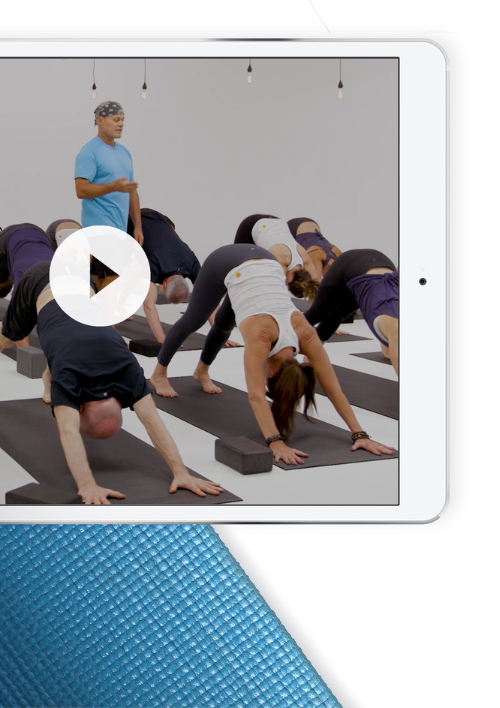Pacing a class in such a way as to include beginners through advanced participants in a powerful experience is a function of using the breath as a tool. After inhalation, there is a pause, and in this exercise, we are adding a count of 3. In this exercise we add asana.
The pause is a peak or a plateau in the breath. There is a peak of the pose, which is the full expression. This peak of the inspiration should match the peak of the physical pose, in timing.
A receiving pose comes after the peak of both breath and pose, the doing of Stihra. In the receiving part of the posture, you open up into Sukha, something beyond the summit. Inhale into the peak and inside of the pause, open up and experience the receiving pose.
A balance between the doing and the non-doing creates equanimity. As a teacher, the pause is where you look for the student to land in their body and the pose. You then count into the pause, looking for the students to receive the pose and open into the receiving pose.
Here is the place to become aware of what participants need next from your leadership. Often an instructor talks over this moment, and students move on in the practice before receiving the pose. Get students to move a little faster yet still be connected to the pacing of breath. Disrupt the drift and move students to the edge of the flow.
Create a brisk pace, from pose to pose, and tempo where people have to keep up, yet nothing feels rushed. In the flow, create drishti as a physical anchor. Drishti exists in physical point to physical point.
The Ujjayi breath gives timing and pacing. In transitions (vinyasas), there is a full inhalation on upward-rising poses and complete exhalation on downward-moving postures, generating the pace and flow.
An alternative, and less advanced way to source the flow would be to lead from pure physicality and body parts moving from point to point. The latter is a good option for beginner students as a scaling option. Default teaching manifests as too slow or too fast when it is not based in drishti and ujjayi and is led from some external source like music or the teacher’s script. In other words, typically, default pacing is not teaching to what is there and happening in real-time.
The mantra for pacing is: slow is smooth and smooth is fast.
Journal: From the last video you journaled: What did you learn about pacing and leading movement matched to breath, in this exercise? What is now opening up for you about pacing and leading movement matched to breath
